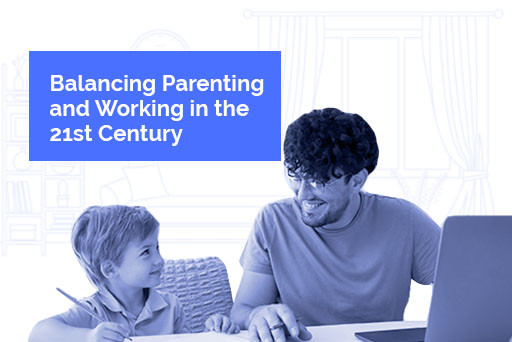
Every organization has parents working for them and balancing parenthood. Working life can sometimes be challenging for the parents, whether you have working parents on your team because they are highly motivated business people or have no choice but to work to pay the bills. In addition, managing a child and a career is challenging, especially if there is no one at home to help watch the child while the parent is at work.
Many organizations have adopted a parent-friendly environment to help ease the burdens of stress and financial constraints on working parents. There are new ways to adopt parent-friendly strategies in the organization. Apart from the significant steps like setting up a breastfeeding area and offering daycare during working hours, there are other ways to take care of the employees with children.
Here are some methods that can be adopted as an organization to ease the stress of parenting and working:
1. Offer Flexibility with Working Hours:
The key to long-term happiness is flexibility with working hours and location. This is most important for working parents. Organizations that trust their employees to do their work and encourage mental health awareness will see their employees thrive, leading to a higher retention rate, productivity, and performance. When flexibility is embraced, both the employer and employees thrive.
2. Support a Higher Level of Autonomy:
Giving autonomy in work will allow for time to enable the parents to drop off and pick up their children at school. Allowing time for work to be completed when it suits them so they can support their family, would benefit your teams and their families. Work environments should be able to help this type of autonomy. However, finding a balance between allowing parents to complete tasks when it suits them and having a deadline for completing tasks is also essential for the team’s growth and organization.
3. Give Parents Ownership of their Time-Keeping:
Give parents ownership of their time-keeping to balance their personal and professional obligations. Ensure that there is no “guilting” if the total hours are not worked as long as their delivery is still so strong and the results benefit the organization.
4. Ask Parents about their Top Challenges:
A parent-friendly strategy that supports working parents is to ask them directly- with curiosity, not judgment- about their top priorities and challenges. Then, please use their feedback and insights gathered to enhance decision-making processes. Again, the focus on weekly measurable outcomes supported by an efficient reporting strategy can help get ahead of the game in retaining this group.
5. Extend Maternity Time Off:
Organizations should allow parents to work from home and create kid-friendly activities. Create policies that enable maternity time off and flexible hours to support working parents better. This allows them to spend time with their children and prevents absent parents.
Organizing daycare, education and the like for the children of the employees for a couple of hours is manageable for the organization and should not be costly.
Organizing daycare, education and the like for the children of the employees for a couple of hours is manageable for the organization and should not be costly
6. Offer a Paid Option to Work Remotely:
Having a paid option for working parents to work remotely is a strategy that can be adopted in the organization. Many parents should enjoy the freedom of working from home with flexible working hours, however, they should also be allowed to work elsewhere. Many people who work from home do too much housework, so giving parents the flexibility of working from an office, café or home is ideal.
7. Give Parents Time Off for Kids Activities:
Parents should be given time off for parenting. Organizations need to encourage parents to attend and be with their children if one of their children has a play, a game, or another kid activity. Kids are the most valuable things in our lives. It is always vital that employers embrace this as part of their organizational culture.
8. Allow Parents to Bring Kids to Work:
Allowing parents to bring their children to work sometimes is a good thing. Daycares, babysitters and the likes are usually difficult to arrange and expensive. Organizing daycare, education and the like for the children of the employees for a couple of hours is manageable for the organization and should not be costly. Some organizations make such daycares accessible for the employees as they make it part of the organization’s budget. The parents will be relieved and happy to know their kids are safe and within reach.
9. Focus on Results:
Focus on the results rather than the hours worked while ensuring that compassion, kindness and empathy are part of the organizational culture. For example, providing a “happiness fund” for all the employees as a bonus for activities that bring them joy or help them relax is an excellent strategy to enhance employee retention. Offer equal advantages for all the employees so that the non-parents do not feel left out by the organization.
In all, helping working parents ease the stress of working and caring for children goes a long way for employees and organizations. Have you been finding it difficult to manage the parents in your organization? We hope this article will proffer some solutions.



